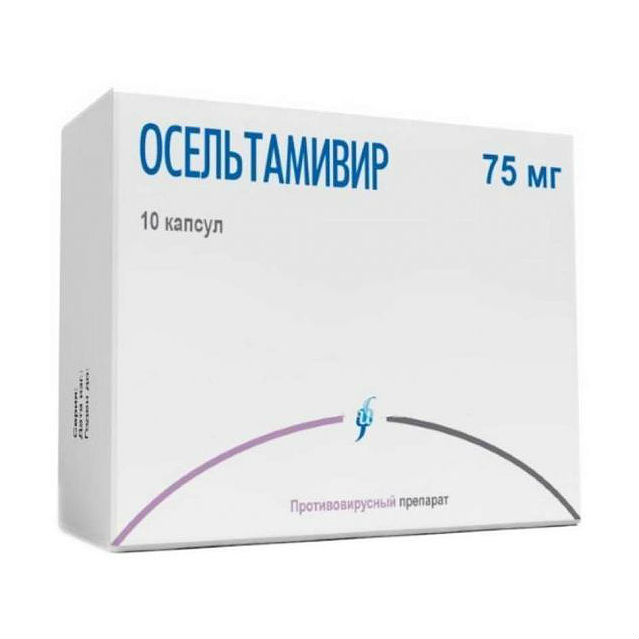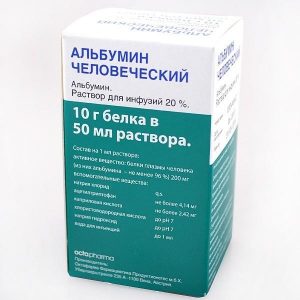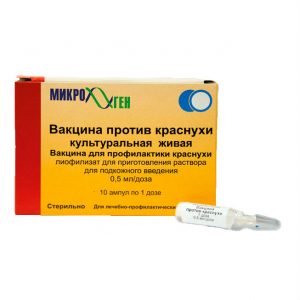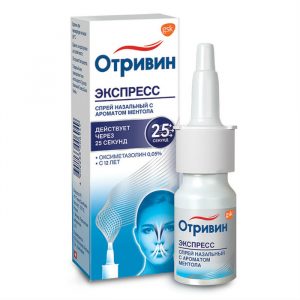Description
Pharmacological action
Antiviral drug. Oseltamivir is a prodrug, its active metabolite (oseltamivir carboxylate, OK) is an effective and selective inhibitor of the neuraminidase of influenza viruses type A and B, an enzyme, catalyzing the release of newly formed viral particles from infected cells, their penetration into uninfected cells of the epithelium of the respiratory tract and the further spread of the virus in the body. It inhibits the growth of the influenza virus in vitro and inhibits the replication of the virus and its pathogenicity in vivo, reduces the release of influenza A and B viruses from the body. The concentration of OK necessary to inhibit neuraminidase by 50% (IC50) is 0.1-1.3 nM for influenza A virus and 2.6 nM for influenza B virus. The median IC50 for influenza B is slightly higher and is 8, 5 nM.
Clinical efficacy of
In the studies, oseltamivir did not affect the production of influenza antibodies, including the production of antibodies in response to the administration of an inactivated influenza vaccine.
Natural influenza infection studies
In clinical trials during seasonal influenza infections, patients started receiving oseltamivir no later than 40 hours after the first symptoms of influenza infection appeared. 97% of patients were infected with influenza A virus and 3% of patients with influenza B. Oseltamivir significantly shortened the period of clinical manifestations of influenza infection (by 32 hours). In patients with a confirmed influenza diagnosis who were taking oseltamivir, the severity of the disease, expressed as the area under the curve for the total symptom index, was 38% less than in patients receiving placebo. Moreover, in young patients without concomitant diseases, oseltamivir reduced by approximately 50% the incidence of influenza complications requiring antibiotics (bronchitis, pneumonia, sinusitis, otitis media). Clear evidence was obtained of the effectiveness of the drug in relation to the secondary criteria of effectiveness related to antiviral activity: oseltamivir caused both a shortening of the time for virus isolation from the body and a decrease in the area under the ² Ñvirus titers-time ² Ñ curve.
Data obtained in a study on oseltamivir therapy in elderly and senile patients show that taking oseltamivir in a dose of 75 mg 2 times a day for 5 days was accompanied by a clinically significant decrease in the median period of clinical manifestations of influenza infection, similar to that in adult patients more young age, however, the differences did not reach statistical significance. In another study, patients over the age of 13 who have the flu who had concomitant chronic diseases of the cardiovascular and / or respiratory systems, received oseltamivir in the same dosing regimen or placebo. There were no differences in the median of the period before the clinical manifestations of influenza infection decreased in the oseltamivir and placebo groups, however, the period of temperature increase when taking oseltamivir was reduced by about 1 day. The proportion of patients secreting the virus on the 2nd and 4th day became significantly less. The safety profile of oseltamivir in patients at risk did not differ from that in the general population of adult patients.
Treatment of influenza in children
In children aged 1-12 years (average age 5.3 years) who had a fever ( 37.8 ° C) and one of the symptoms of the respiratory system (cough or rhinitis) during the period of virus circulation flu among the population a double-blind, placebo-controlled study was conducted. 67% of patients were infected with influenza A virus and 33% of patients with influenza B. Oseltamivir (when taken no later than 48 hours after the first symptoms of influenza infection) significantly reduced the duration of the disease (by 35.8 hours) compared with placebo. The duration of the disease was defined as the time to stop coughing, nasal congestion, disappearance of fever, and return to normal activity. In the group of children receiving oseltamivir, the incidence of acute otitis media was reduced by 40% compared with the placebo group. Recovery and a return to normal activity occurred almost 2 days earlier in children receiving oseltamivir compared with the placebo group.
Another study involved children aged 6-12 years with asthma 53, 6% of patients had influenza infection confirmed serologically and / or in culture. The median disease duration in the group of patients receiving oseltamivir did not significantly decrease. But by the last 6th day of oseltamivir therapy, the forced expiratory volume in 1 sec (FEV1) increased by 10.8% compared with 4.7% in patients receiving placebo (p = 0.0148).
Influenza prophylaxis in adults and adolescents
The prophylactic efficacy of oseltamivir in naturally occurring influenza A and B infections has been proven in 3 separate phase III clinical trials. About 1% of patients fell ill with oseltamivir. Oseltamivir also significantly reduced the frequency of virus isolation and prevented the transmission of the virus from one family member to another.
Adults and teenagers who have been in contact with a sick family member, started taking oseltamivir within two days after the onset of flu symptoms in family members and continued it for 7 days, which significantly reduced the incidence of influenza in contactees by 92%.
In unvaccinated and generally healthy adults aged 18-65, taking oseltamivir during an influenza epidemic significantly reduced the incidence of influenza (by 76%). Patients took the drug for 42 days.
In elderly and elderly people in nursing homes, 80% of whom were vaccinated before the season when the study was conducted, oseltamivir significantly reduced the incidence of influenza by 92%. In the same study, oseltamivir significantly (by 86%) reduced the frequency of influenza complications: bronchitis, pneumonia, sinusitis. Patients took the drug for 42 days.
Influenza prophylaxis in children
The prophylactic efficacy of oseltamivir in natural influenza infections has been demonstrated in children 1 ² 12 years of age after contact with an ill family member or someone in a permanent environment. The main parameter of effectiveness was the frequency of laboratory-confirmed influenza infection. In children receiving oseltamivir in powder form to prepare an oral suspension in a dose of 30 to 75 mg once daily for 10 days and not isolating the virus initially, the frequency of laboratory-confirmed influenza decreased to 4% (2/47) compared with 21% (15/70) in the placebo group.
Influenza prophylaxis in immunocompromised individuals
Immunocompromised individuals in seasonal influenza infection and in the absence of virus excretion initially, the prophylactic use of oseltamivir reduced the incidence of laboratory-confirmed influenza infection, accompanied by clinical symptoms, to 0.4% (1/232) compared with 3% (7/231) in the placebo group. Laboratory-confirmed influenza infection, accompanied by clinical symptoms, was diagnosed if there was an oral temperature above 37.2 ° C, cough and / or acute rhinitis (all recorded on the same day while taking the drug / placebo), as well as a positive result reverse transcriptase polymerase chain reaction to influenza virus RNA.
resistance Clinical trials of
In all patients carrying OK-resistant virus, carriage was temporary, did not affect the elimination of the virus, and did not cause a worsening of the clinical condition.
Patient population
Patients with mutations leading to
resistance Phenotyping *
Genotyping and phenotyping *
Adults and adolescents
4/1245 (0.32%)
5/1245 (0.4%)
Children (1-12 years)
19/464 (4.1%)
25/464 (5.4%)
* No genotyping was performed in any of the studies.
When taking oseltamivir for postexposure prophylaxis (7 days), family contact prophylaxis (10 days), and seasonal prophylaxis (42 days) in patients with normal immune system function, there were no cases of drug resistance. In a 12-week study on seasonal prophylaxis in individuals with immunocompromised cases of resistance were also not observed.
Data from selected clinical cases and observational studies of
In patients those who did not receive oseltamivir, naturally occurring mutations of influenza A and B viruses were found, which had a reduced sensitivity to oseltamivir. In 2008, a H275Y mutation leading to resistance was detected in more than 99% of the 2008 H1N1 virus strains circulating in Europe. The 2009 H1N1 influenza virus ( ² Ñswine flu ² Ñ) was in most cases sensitive to oseltamivir. Resistant strains of oseltamivir were found in individuals with normal immune system function and those with weakened immune systems who took oseltamivir. The degree of decrease in sensitivity to oseltamivir and the frequency of occurrence of such viruses may vary depending on the season and region. Resistance to oseltamivir was found in patients with pandemic H1N1 flu who received the drug for both treatment and prevention.
The incidence of resistance may be higher in younger patients and immunocompromised patients. Oseltamivir-resistant laboratory strains of influenza viruses and influenza viruses from patients treated with oseltamivir therapy carry the N1 and N2 neuraminidase mutations. Mutations leading to resistance are often specific for the subtype of neuraminidase. When deciding on the use of oseltamivir, the seasonal sensitivity of the influenza virus to the drug should be taken into account (the latest information can be found on the WHO website).
Preclinical data
Preclinical data obtained from standard studies of pharmacological safety, genotoxicity and chronic toxicity, did not reveal a particular danger to humans.
Carcinogenicity: the results of 3 studies to identify carcinogenic potential (two 2-year studies on rats and mice for oseltamivir and one 6-month study on transgenic mice Tg: AC for the active metabolite) were negative.
Mutagenicity: Standard genotoxic tests for oseltamivir and an active metabolite were negative.
Effect on fertility: oseltamivir at a dose of 1500 mg / kg / day did not affect the generative function of male and female rats.
Teratogeinost: in studies on the teratogenicity of oseltamivir at a dose of up to 1500 mg / kg / day (in rats) and up to 500 mg / kg / day (in rabbits), no effect on embryo-fetal development was found. In studies on the antenatal and postnatal developmental periods in rats with the introduction of oseltamivir at a dose of 1500 mg / kg / day, an increase in the period of childbirth was observed: the safety limit between exposure for humans and the maximum non-effective dose in rats (500 mg / kg / day) is 480 times higher for oseltamivir and 44 times higher for its active metabolite. Exposure to the fetus was 15-20% of that of the mother.
Misc: oseltamivir and the active metabolite enter the milk of lactating rats. According to limited data, oseltamivir and its active metabolite pass into human breast milk. According to the extrapolation of data obtained in animal studies, their amount in breast milk can be 0.01 mg / day and 0.3 mg / day, respectively.
Approximately 50% of the tested guinea pigs, when the maximum doses of the active substance oseltamivir were administered, showed skin sensitization in the form of erythema. Reversible eye irritation in rabbits has also been identified.
While very high oral single doses (657 mg / kg and above) of oseltamivir did not affect adult rats, these doses had toxic effects on immature 7-day-old rat pups, including the death of animals. Adverse effects were not observed with chronic administration at a dose of 500 mg / kg / day from 7 to 21 days of the postnatal period.
Contraindications
Hypersensitivity to oseltamivir or any component of the drug. The terminal stage of renal failure (creatinine clearance 10 ml / min). Children’s age up to 1 year.
Severe liver failure.
Precautions
Pregnancy, period of breastfeeding.
Composition
1 capsule 75 mg contains:
Active ingredient: oseltamivir phosphate – 98.5 mg (in terms of oseltamivir – 30.0 mg).
Excipients: pregelatinized corn starch, povidone K30, croscarmellose sodium, talc, sodium stearyl fumarate.
Hard gelatin capsule No. 1: titanium dioxide, gelatin.
Dosage and administration of
Treatment of
The drug should be started no later than 2 days after the onset of symptoms of the disease.
Adults and adolescents 12 years of age
75 mg each (one capsule 75 mg or one capsule 30 mg + one capsule 45 mg) 2 times a day by mouth for 5 days. Increasing the dose of more than 150 mg / day does not increase the effect.
Children weighing> 40 kg or aged 8 to 12 years old
Children who can swallow capsules can also receive treatment by taking one 75 mg capsule or one 30 mg capsule + one 45 mg capsule 2 times a day
for 5 days.
Children aged 1 to 8 years
Recommended dosage of oseltamivir in capsules of 30 mg and 45 mg:
Body mass
recommended dose for 5 days
15 kg
> 15-23 kg
> 23-40 kg
> 40 kg
30 mg twice a day
45 mg twice a day
60 mg twice a day
75 mg twice a day
Suspension is possible prepared extemporally (see subsection Extemporaneous preparation of oseltamivir suspension ).
Prevention
The drug should be started no later than 2 days after contact with patients.
Adults and adolescents 12 years of age
75 mg each (one capsule 75 mg or one capsule 30 mg + one capsule 45 mg) once a day by mouth for at least 10 days after contact with the patient. During a seasonal influenza epidemic – 75 mg once a day for 6 weeks. Preventive action lasts as long how long does the drug take.
Children weighing> 40 kg or aged 8 to 12 years old
Children who can swallow capsules can also receive prophylactic therapy by taking one 75 mg capsule or one 30 mg capsule + one 45 mg
capsule 1 time per day for 10 days.
Children 1 to 8 years old
Recommended dosage of oseltamivir in capsules of 30 mg and 45 mg:
Body mass
Recommended dose for 5 days
15 kg
> 15-23 kg
> 23-40 kg
> 40 kg
30 mg twice a day
45 mg twice a day
60 mg twice a day
75 mg twice a day
Suspension is possible prepared extemporally (see subsection Extemporaneous preparation of oseltamivir suspension ).
Dosage in special cases
Patients with impaired renal function
Treatment
Patients with creatinine clearance greater than 60 ml / min dose adjustment is not required. In patients with creatinine clearance from 30 to 60 ml / min, the dose of oseltamivir should be reduced to 30 mg twice a day for 5 days.
In patients with creatinine clearance of 10 to 30 ml / min, the dose of oseltamivir should be reduced to 30 mg once a day for 5 days. For patients on permanent hemodialysis, oseltamivir in an initial dose of 30 mg can be taken before dialysis, if flu symptoms appear within 48 hours between dialysis sessions. To maintain a plasma concentration at the therapeutic level, oseltamivir should be taken 30 mg after each dialysis session. Peritoneal dialysis patients oseltamivir should be taken in an initial dose of 30 mg before dialysis, then 30 mg every 5 days. The pharmacokinetics of oseltamivir in patients with end-stage renal failure (with creatinine clearance 10 ml / min) who are not on dialysis have not been studied. In this regard, there are no dosage recommendations for this group of patients.
prophylaxis Patients with creatinine clearance greater than 60 ml / min do not require dose adjustment. In patients with creatinine clearance from 30 to 60 ml / min, the dose of oseltamivir should be reduced to 30 mg once a day.
In patients with creatinine clearance of 10 to 30 ml / min, it is recommended to reduce the dose of oseltamivir to 30 mg every other day. For patients undergoing permanent hemodialysis, oseltamivir in an initial dose of 30 mg can be taken before dialysis ( 1st session ). To maintain a plasma concentration at the therapeutic level, oseltamivir should be taken 30 mg after each subsequent odd dialysis session. For patients on peritoneal dialysis, oseltamivir should be taken in an initial dose of 30 mg before dialysis, then 30 mg every 7 days. The pharmacokinetics of oseltamivir in patients with end-stage renal failure (with creatinine clearance 10 ml / min) who are not on dialysis have not been studied. In this regard, there are no dosage recommendations for this group of patients.
Patients with impaired liver function
Dose adjustment in the treatment and prevention of influenza in patients with impaired hepatic function of mild to moderate severity is not required. The safety and pharmacokinetics of oseltamivir in patients with severe hepatic impairment have not been studied.
Elderly and senile patients
Dose adjustment for prophylaxis or treatment of influenza is not required.
Immunocompromised patients (after transplantation)
For seasonal influenza prophylaxis in immunocompromised patients aged
1 year – within 12 weeks, dose adjustment is not required.
Children
Oseltamivir in this dosage form should not be prescribed to children under 1 year of age.
Overdose of
In most cases, an overdose during clinical trials and in the post-marketing use of oseltamivir was not accompanied by any adverse events. In other cases, the symptoms of an overdose corresponded to the adverse events presented in the section Side effects .
Storage conditions
In a dark place at a temperature not exceeding 25 ° C
Keep out of the reach of children.
Expiration
2 years.
Do not use after expiration date.
Terms and conditions
prescription




